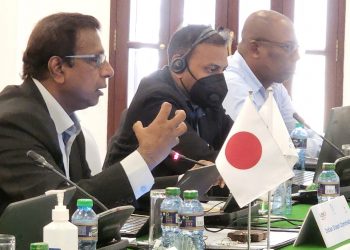Kenya is leading the world in spearheading the adoption of guidelines to assist the shipping industry in detecting and suppressing illegal wildlife trafficking that today commands a black market worth US$23 billion annually.
Experts have developed these guidelines through a consultative approach between the Kenyan Government, the United Nations Development Programme (UNDP), a host of environmental NGOs, and the private sector.
The aim is to build a robust capacity for the maritime sector to suppress wildlife trafficking. Essentially, the guidelines hope to promote cooperation at national, sub-regional, regional, and international levels capable of disrupting criminal networks of wildlife traffickers.
At a global stakeholder engagement forum for the guidelines held virtually this week, Kenya’s Cabinet Secretary of Transport and Infrastructure, Mr James Macharia noted that the proposed rules are an additional tool to combat transnational organized crime syndicates, which exploit maritime supply chains. He acknowledged that the maritime sector now supports a thriving economy of ships actively smuggling wildlife.
“The guidelines should enhance awareness and involvement of ship-owners, shipping lines, maritime operators, seafarers and competent government authorities to combat illicit activities of wildlife trafficking,” Mr. Macharia said
At the same event, Kenya’s Principal Secretary in the State Department of Shipping and Maritime Ms. Nancy Karigithu elaborated a variety of measures the Kenyan Government recommends in the guidelines.
First is the creation of a procedure to assess a ship’s vulnerability to wildlife trafficking. For detecting the smuggling of wildlife, relevant government agencies should establish a multi-agency joint task force. The unit officers should coordinate functions of prevention, detection, interception, investigation and prosecution of perpetrators.
Another measure is intensifying security at the port, as per the International Ship and Port Facility Security Code. The goal is to spur transparency amongst port users and deter misuse of free trade zones, which criminals exploit to avoid detection.
Mr. Brian Gonzales, Head of Protection of Endangered Species at WWF Hong Kong, came in handy with a presentation on red flags that can be used as indicators of wildlife and timber trafficking in containerized sea cargo.
Some include shipment of commodities incongruous with the origin and destination country, weight and appearance discrepancies, vague descriptions and questionable paperwork, among others.
The world is currently writhing in a bout of terrorism and this guideline, if adopted, will go a long way to combat transnational organized crimes that feed into world instability.
As the world continues the debate on climate change mitigation, it should not remove focus on wildlife trafficking which leads to indiscriminate plunder of natural resources. Thus, it undermines climate change adaptation efforts, especially those pegged on ecosystem-based approaches, which use ecosystems and biodiversity as the adaptation strategy.
The maritime industry plays a focal role in transportation of these illegal wildlife products, partly due to low levels of inspection and interception. Of the 800 million TEU transported by sea each year, only 2% of the containers are subjected to physical inspection. 70-90% of many illegal wildlife goods are trafficked by sea, in form of containerized cargo.
Although there exist multiple regulations to curb illegal wildlife trafficking, with the most common being Convention on International Trade in Endangered Species of Wild Fauna and Flora (CITES), there lacks a harmonized approach in the maritime sector to combat the rampant misuse of ports and shipping routes by traffickers.
The guidelines that Kenya is proposing are a solution to this gap. Member States of the International Maritime Organization (IMO) have already approved the proposals, during last year’s 44th meeting of FAL Convention on the facilitation of international maritime traffic. It signals an early adoption once all deliberations are completed.
The input from stakeholder’s engagement forum this week will be submitted to IMO for consideration and approval in the upcoming FAL 46 next year.






